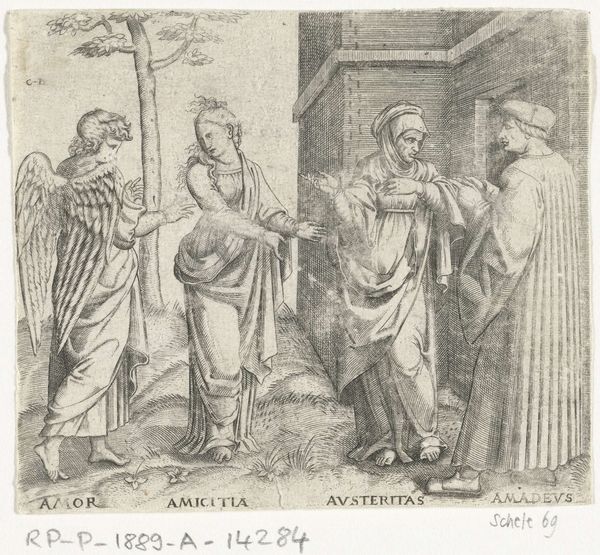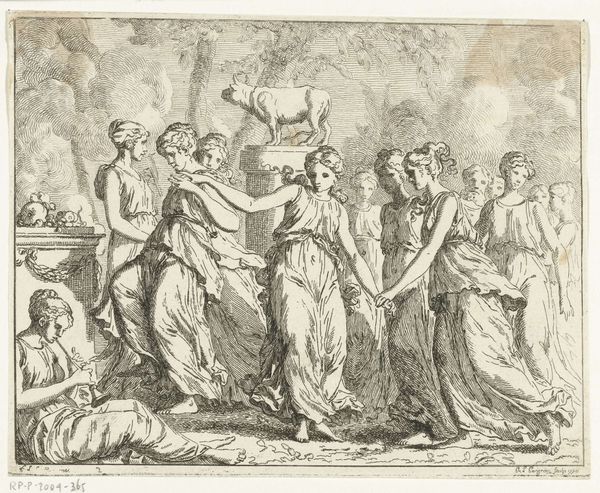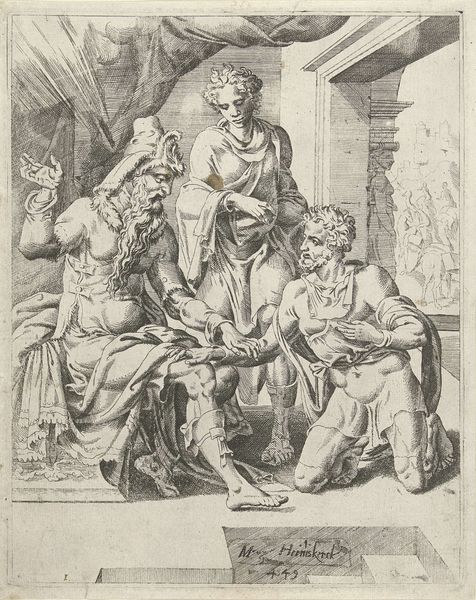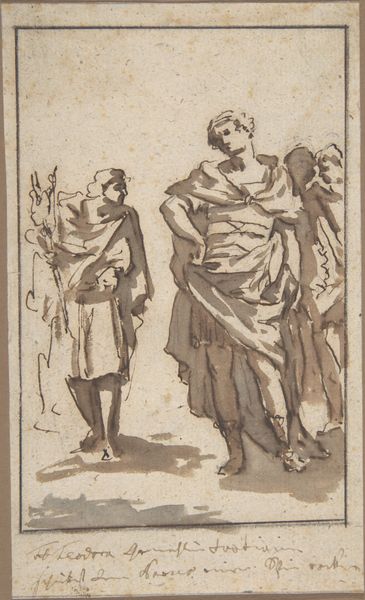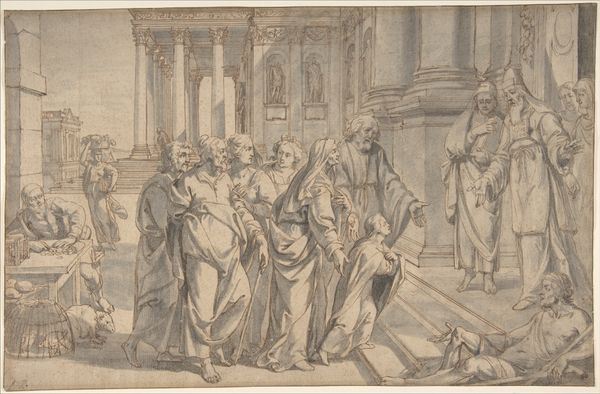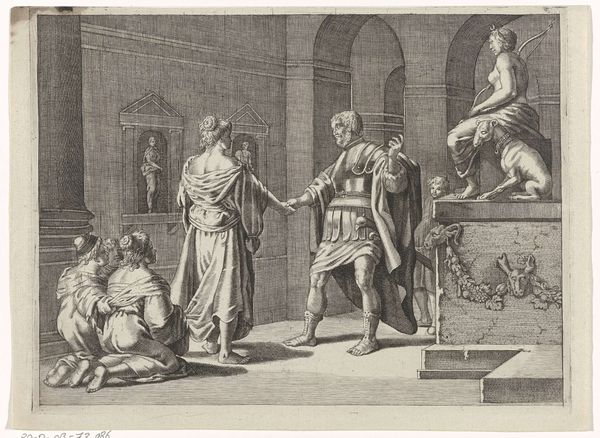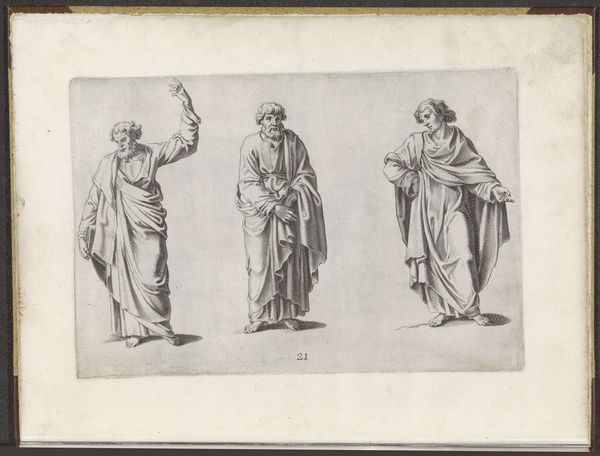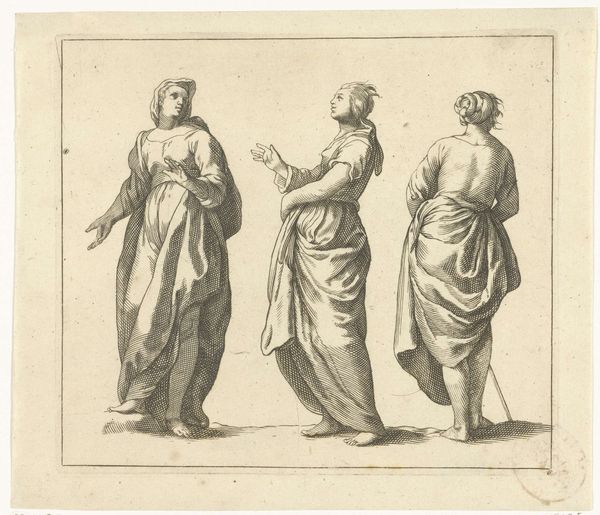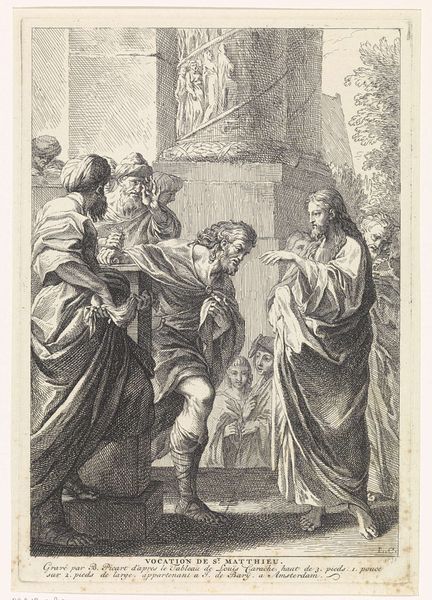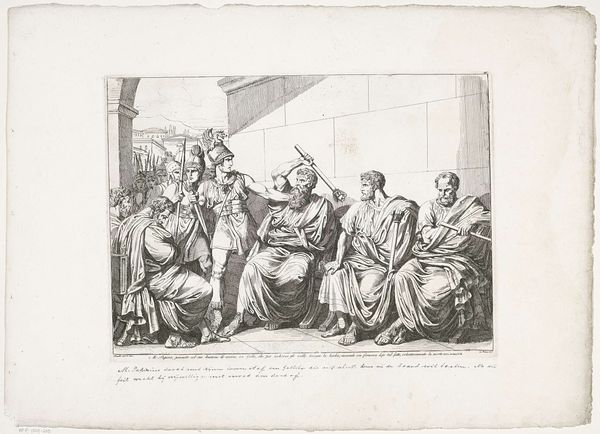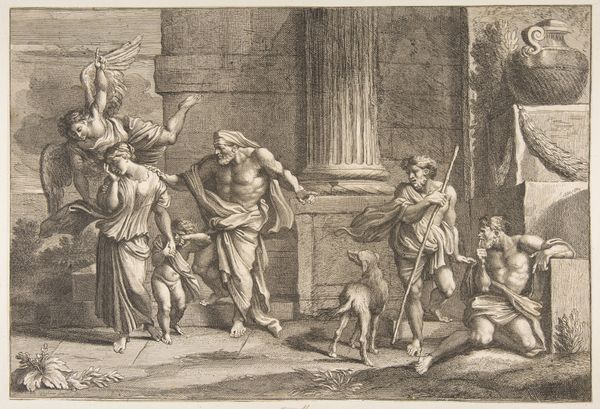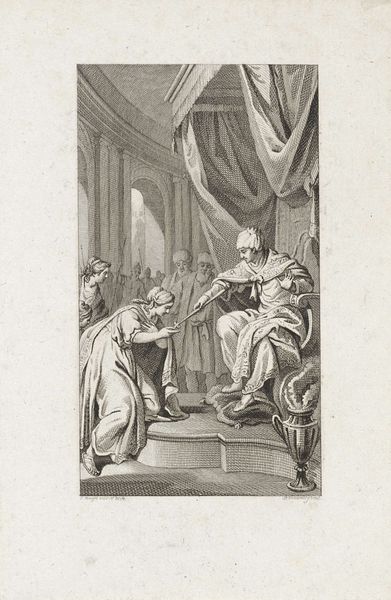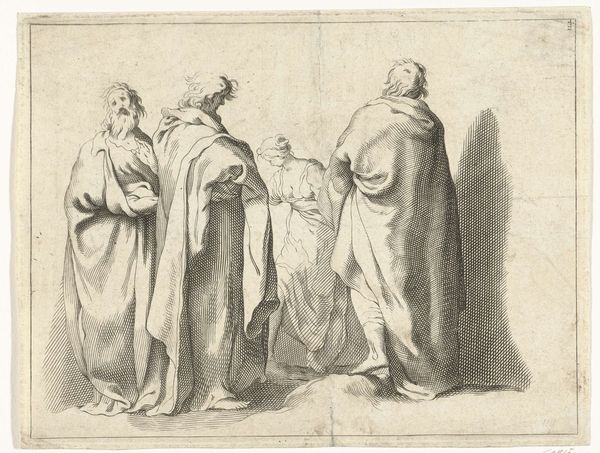
drawing, ink, pencil, pen
#
drawing
#
narrative-art
#
baroque
#
pen sketch
#
pencil sketch
#
figuration
#
ink
#
pen-ink sketch
#
pencil
#
sketchbook drawing
#
pen
#
pencil work
#
history-painting
Dimensions: height 107 mm, width 168 mm
Copyright: Rijks Museum: Open Domain
Editor: So, here we have Hans Hinrich Rundt's pen and ink drawing, "The Chinese Emperor Zunchinius Kills His Daughter," created before 1696. It’s, well, pretty dark, isn't it? What strikes you when you look at it? Curator: Oh, darling, darkness is but unacknowledged light. This isn't just grim, it’s a raw glimpse into the tangled psyche of power. See how the composition places the daughter slightly off-center? Almost as if the narrative struggles to fully embrace the horror it depicts. Do you sense that tension, that reluctant dance with brutality? Editor: I do. It feels…staged? I mean, they're posed almost like actors. Curator: Precisely! Rundt uses Baroque drama, but with a chilling twist. He is showing us a history, but he also suggests how that history becomes a theater of cruelty, almost divorced from real emotion, except perhaps the sorrow shown by the other characters in the scene. Have you ever considered how often depictions of violence in art are themselves performative? Editor: I never thought of it that way! I was too focused on the emperor and his daughter. It changes the whole story, almost makes it…about the audience? Curator: Yes, and Rundt is begging the audience to participate in what they are seeing. Not for their viewing pleasure, of course. It is their opportunity to consider this violence against innocence in society. He forces us to become complicit witnesses. Editor: That’s… a bit terrifying! It makes this piece so much more powerful than just a history lesson. Curator: Exactly! It holds up a mirror, doesn't it? Even after all this time, Rundt asks us: what stories do we tell, what brutalities do we accept, and what role do we play in their perpetuation? It is deeply haunting.
Comments
No comments
Be the first to comment and join the conversation on the ultimate creative platform.
